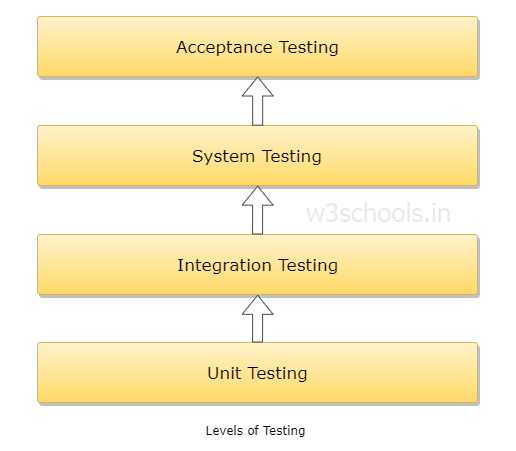Testers are following various levels during the time of testing. The primary two levels of testing are divided into four levels of testing. These levels of software testing comprise dissimilar methodologies that can be implemented at the time of testing software.
The two significant levels of software testing are:
- Functional Testing
- Non-functional Testing
In this chapter, you will be learning about the different testing levels and how these implementations are being done.
Functionality Test
This is a kind of black box testing that is specification-oriented, which is done by putting the input, and then the output is examined whether it comes the way it is expected. Five steps of testing are there, which involved the testing of an application for functionality. They are:
- Determine the functionality which a projected software is meant to perform.
- Creation of test data depending on the requirements of the application.
- Check for output, depending on the data being tested along with the specifications of your application.
- Scripting of scenarios by testing and then executing those test cases.
- Compare the actual as well as expected output depending on the executed tests.
Non-Functional Testing
This type of testing deals with testing any product from the requirement point of view that is nonfunctional in type and important at the same time. Nonfunctional testing can be categorized as:
- Performance
- Security
- User interface
Levels of Testing
The four Levels of software testing goes from Unit testing towards Integration testing on the following list:
- Unit Testing
- Integration Testing
- System Testing
- Acceptance Testing

Let's dig into each of these levels of testing in brief:
- Unit Testing: In this testing level, individual sections or parts of software or product are tested. The idea of this is to confirm every part or unit of the product after the test.
- Integration Testing: In this software testing level, individual parts need to combine and test as a single cluster. This testing level's main idea is for exposing the faults while interacting between integrated units of the project.
- System Testing: In this software testing level, the whole, integrated software or project is tested. The principle for this testing is to assess the system's conformity with its intended requirements.
- Acceptance Testing: At this software testing level, a system needs to be tested for adequacy. This test is purposefully done for evaluating the compliance of the system with business requirements.